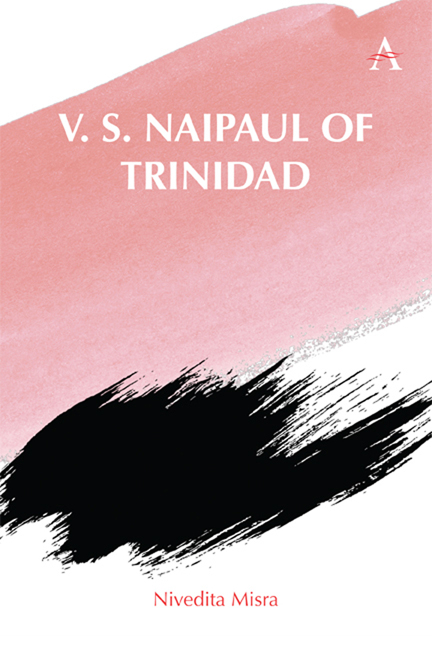Book contents
- Frontmatter
- Dedication
- Contents
- Foreword
- Introduction
- 1 Early Fiction of the 1950s: The Trinidad Years
- 2 The Interloper in Travel Writing
- 3 Mimicry and Experiments of the 1960s
- 4 Displacement Across Borders in the 1970s
- 5 The Imperial Vision of the 1980s
- 6 Redemptive Journeys in the 1990s
- 7 Composing again in the 2000s
- Conclusions
- Appendix A A Note on Trinidad
- Appendix B A Note on V. S. Naipaul’s Terminolog y and Use of Spellings
- Works Cited
- Index
Appendix B - A Note on V. S. Naipaul’s Terminolog y and Use of Spellings
Published online by Cambridge University Press: 27 March 2024
- Frontmatter
- Dedication
- Contents
- Foreword
- Introduction
- 1 Early Fiction of the 1950s: The Trinidad Years
- 2 The Interloper in Travel Writing
- 3 Mimicry and Experiments of the 1960s
- 4 Displacement Across Borders in the 1970s
- 5 The Imperial Vision of the 1980s
- 6 Redemptive Journeys in the 1990s
- 7 Composing again in the 2000s
- Conclusions
- Appendix A A Note on Trinidad
- Appendix B A Note on V. S. Naipaul’s Terminolog y and Use of Spellings
- Works Cited
- Index
Summary
V. S. Naipaul was a man of his times. Historical references to Guyana before independence appear as Guiana or British Guiana. Surinam, which was also known as Dutch Guiana until 1948, appears as Surinam and not Suriname.
V. S. Naipaul constantly uses the terms Negro, Indians, and East Indians in his books to refer to the Afro-Trinidadians, Amerindians (People of the First Nation) and Indo-Trinidadians, respectively. Frequently, these are simplifications because a large population is mixed, and the culture is definitely mixed. In the 1930s, when Seepersad Naipaul wrote, and in the 1950s and 1960s, when V.S. Naipaul wrote about Trinidad, the Indo- Trinidadians constituted one third of the Trinidadian population. During the late 1960s and early 1970s, the Afro-Trinidadians identified themselves as Blacks.
V. S. Naipaul uses the spelling Ralegh for Sir Walter Raleigh in The Loss of El Dorado but reverts to the more commonly used spelling of Raleigh in A Way in the World. I have used Raleigh throughout the book except when in actual quotes.
V. S. Naipaul uses the spelling of Anantamurti for the Indian writer U.R. Ananthamurthy in India: A Wounded Civilization. I have used the spelling Ananthamurthy except when quoting Naipaul directly.
Naipaul uses the term ‘Mohemmedans’ for Muslims in A Way in the World. I have used Muslims to refer to the followers of Prophet Mohammed.
- Type
- Chapter
- Information
- V. S. Naipaul of Trinidad , pp. 193 - 194Publisher: Anthem PressPrint publication year: 2024

